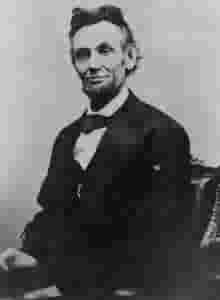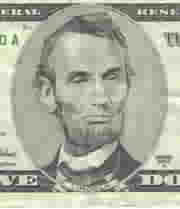David Rice Atchison (
August 11,
1807 –
January 26,
1886) was a mid-19th century
Democratic United States Senator from
Missouri. Frequently serving as
President Pro Tempore of the Senate, he is probably best known as the focus of an
urban legend claiming that, for one day, he was de jure
President of the United States.
Some claim that Atchison technically was
President of the United States for one day—Sunday,
March 4,
1849. Outgoing President
James Polk's term expired at noon on the morning of March 4, and his successor,
Zachary Taylor, refused to be
sworn into office on the
sabbath (Sunday). Taylor's
Vice Presidential running mate,
Millard Fillmore, likewise was not inaugurated. As
President Pro Tempore of the
Senate from the prior
U.S. Congress, under the presidential succession law in place at the time, Atchison was technically
Acting President.
However, while it is true that the offices of
President and
Vice President were vacant, Atchison in fact was not next in line. While the terms of
James K. Polk and Vice President
George Mifflin Dallas expired at the first moment (noon EST) of
March 4, Atchison's tenure as
President Pro Tempore did as well. He also never took the oath of office, although there is no
constitutional requirement, then or now, for an
Acting President to do so. No disability or lack of qualification prevented Taylor and Fillmore from taking office, and as they had been duly certified as President-elect and Vice President-elect, if Taylor was not President because he had not been sworn in as such, then Atchison, who hadn't been sworn in either, certainly wasn't.
Atchison was sworn in for his new term as President Pro Tempore minutes before both Fillmore and Taylor, which might theoretically make him Acting President for at least that length of time; however, this also implies that any time the Vice President is sworn in before the President, the Vice President is the de facto Acting President. Since this is a common occurrence, if Atchison is considered President, so must every Vice President whose inauguration preceded that of the President. Obviously this is not the case. Therefore, while one could argue that Atchison was legally President for a few minutes (though even this much is highly debatable), claims that he should be considered an "official" President are surely incorrect.
When asked what he did on
March 4,
1849, Atchison replied,
"I went to bed. There had been two or three busy nights finishing up the work of the Senate, and I slept most of that Sunday." He jokingly boasted that his "presidency" was the "most honest administration this country ever had."Despite this, a museum exhibit in his honor (claiming to be the country's smallest "presidential library") opened in February
2006 at the
Atchison County Historical Museum in
Atchison, Kansas.
Atchison was 41 years and 6 months old at the time of his "presidency," which, if it had been official, would still make him the youngest President in American history.
Theodore Roosevelt, the youngest to serve, was 42 years and 11 months old when he was sworn in following the death of
William McKinley in
1901, and
John F. Kennedy, the youngest to be elected, was 43 years and 7 months old when he was inaugurated in
1961. As President Pro Tempore, Atchinson served as
Acting Vice President on two separate occasions, from October 20, 1852 to March 4, 1853 and from April 18, 1853 to December 4, 1854.
Atchison is buried in his home of
Plattsburg, Missouri, where a statue honors him in front of the
Clinton County Courthouse. His grave marker reads "President of the United States for One Day."
Atchison, Kansas is named for him. The town subsequently gave its name to the famous
Atchison, Topeka, and Santa Fe Railroad.

